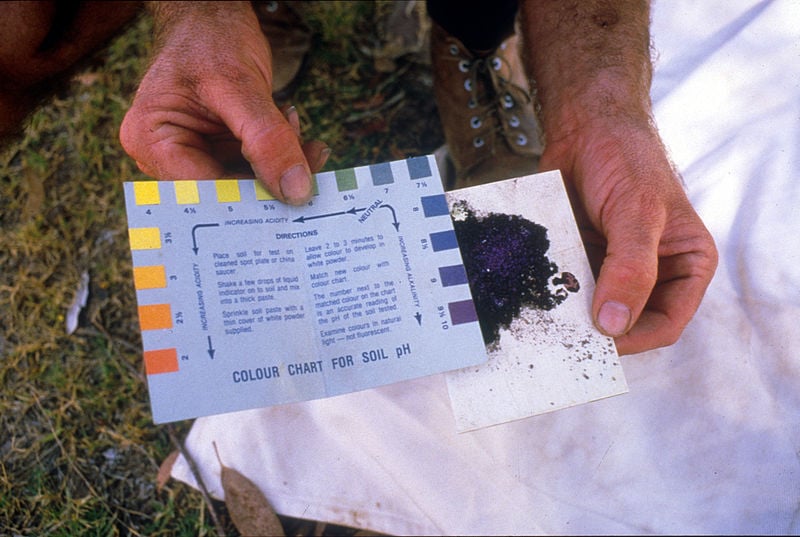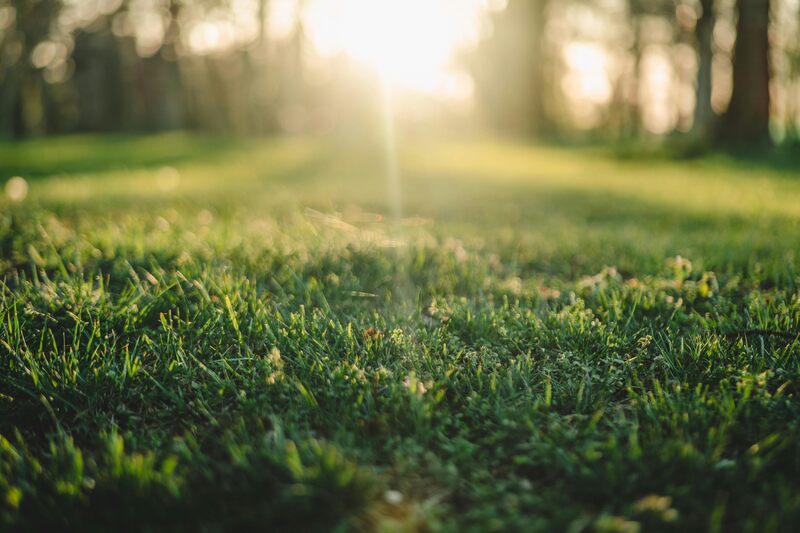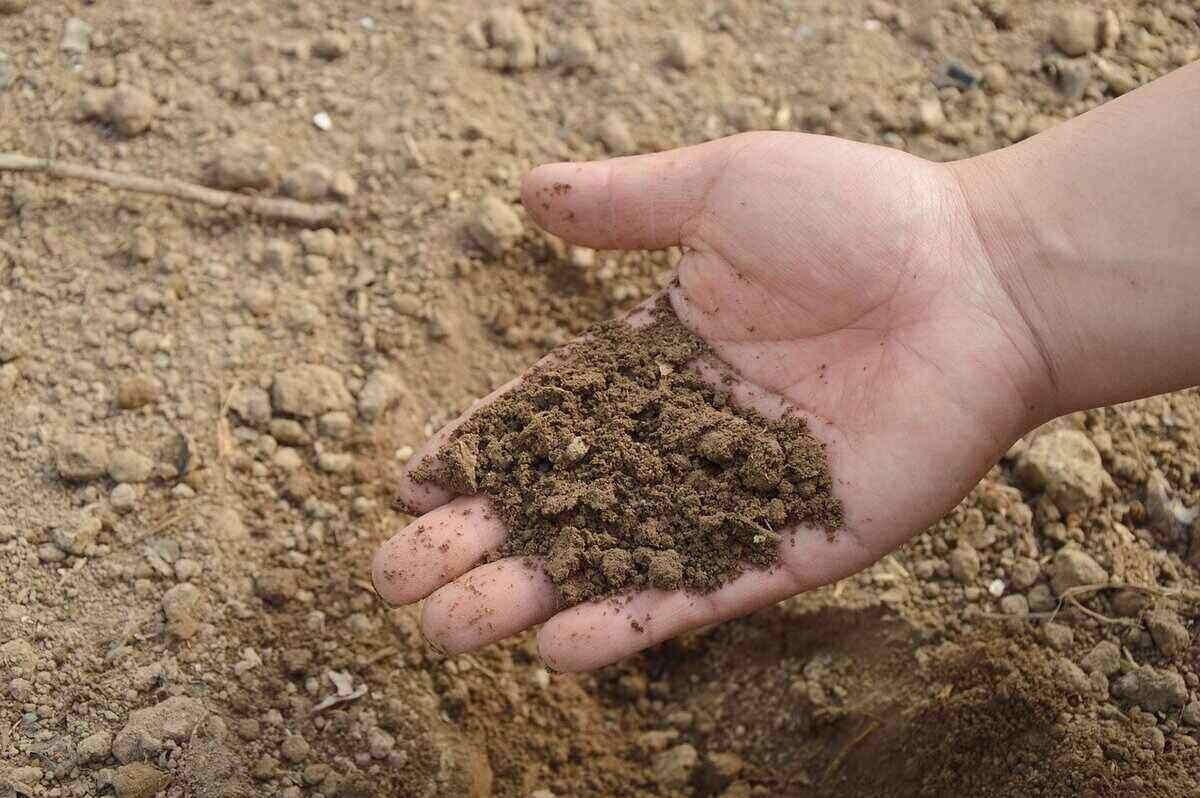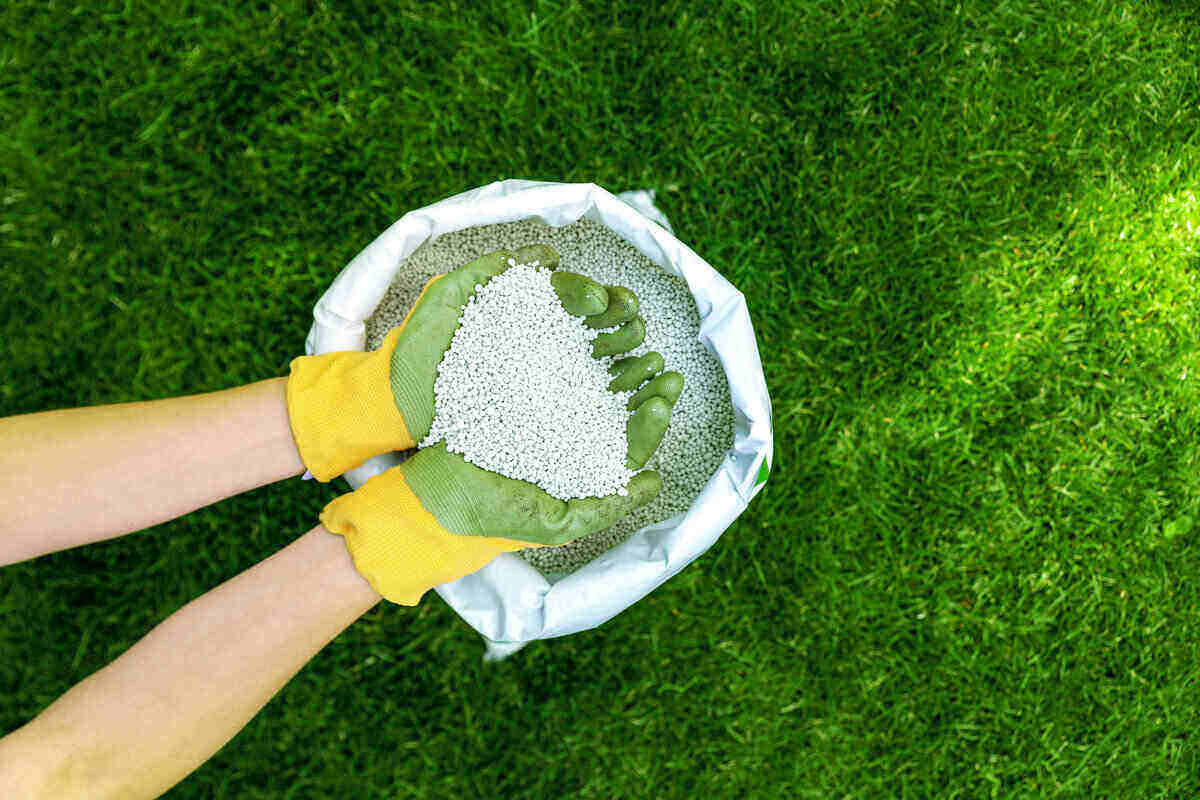
If you see weeds in your lawn, there’s a good reason why: They’ve found just the right conditions to put down roots.
Poor soil quality, improper mowing, and seed dispersal by birds or plants that release their seeds into the air are reasons weeds grow in your lawn. We’ll explore these and other common causes of weed growth so you can correct these conditions in your yard.
Poor Soil Health

Factors contributing to poor soil health include compaction, a lack/excess of nutrients, and an unbalanced pH level (too acidic or too alkaline). When the soil has these challenges, the grass becomes weak and can die, leading to bare patches and weeds.
Even though weeds are just unwanted plants in our yards, they can offer valuable insights into what your turf may be missing (or having too much of). An overgrowth of a particular weed can help you identify your lawn’s needs and/or deficiencies.
If you’re unsure why your lawn is so weedy, hire a lawn treatment pro to give your lawn a proper diagnosis and recommend solutions to restore your turf.
Compacted Soil

Compacted soil restricts root growth and lowers oxygen levels, resulting in conditions that favor weeds over grass. Factors like foot traffic, heavy machinery, and clay soil contribute to this issue. Prostrate spurge, goosegrass, and annual bluegrass can indicate compacted soil.
Core aeration helps alleviate compacted soil by creating openings in the soil, enabling air, water, and nutrients to penetrate deeper. In this more open, fertile environment, healthy grass roots will thrive, creating a turf that can outcompete weeds, ultimately keeping weed growth at bay.
See Related:
Lack of Nutrients (or Too Many)
Specific weeds are known to indicate and flourish in infertile soils. For example, clovers are prevalent in low-nitrogen soils, while crabgrass tends to grow where the soil is low in calcium and nutrients. Dandelions generally indicate poor soil that is low in calcium and compacted.
Conversely, too many nutrients, like nitrogen, can also encourage the growth of certain weeds. Weeds such as chickweed and purslane flourish in soils with high fertility, often outcompeting desired plants.
In order to figure out what your soil needs, you can conduct a soil test. Then, based on the results of this test, you’ll know how to treat your lawn to grow strong grass that can fight off weeds.
See Related:
Acidic or Alkaline Soil
The weeds in your garden can tell you if your soil is acidic or alkaline. When the soil is too acidic, certain weeds will pop up, and vice versa.
Weeds as Indicators
Certain weeds can serve as indicators of soil pH levels, helping you identify whether your soil is too acidic or alkaline:
Acidic Soils (pH below 7)
- Annual bluegrass
- Crabgrass
- Prostrate knotweed
- Sheep’s sorrel
Alkaline Soils (pH above 7)
- Bermudagrass
- Clover
- Yellow wood sorrel
Regular Soil Testing
An optimal soil pH (between 6 to 7 for most grasses) will promote grass health and reduce weeds. You can achieve this by regularly testing your soil to monitor pH and nutrient levels and making necessary changes. Soil pH directly affects how easily plants can get nutrients like nitrogen, phosphorus, potassium, sulfur, calcium, and magnesium.
Note: If you’d really like to dig in (pardon the pun) and see what your soil makeup looks like, check out this guide: How to Use a Soil Test Kit for Your Lawn.
Soil pH Adjustments
- For acidic soils: Applying lime can raise the pH, making the soil less acidic and improving nutrient uptake.
- For alkaline soils: Incorporating elemental sulfur can lower the pH, making nutrients more available to plants.
See Related:
- Signs of Acidic Soil in Your Lawn (Low pH)
- Signs of Alkaline Soil in Your Lawn (High pH)
- 9 Reasons Why Soil Testing Is Important for the Lawn
- When to Test the Soil pH of Your Lawn
- Why Test the Soil pH of Your Lawn
- How Soil pH Affects Lawn Health
- How to Change Your Soil pH
Improper Mowing Practices

The way you mow your lawn directly impacts its health. Mowing practices like scalping and disregarding the one-third rule for mowing can place stress on the grass, leading to thinning and bare spots where weeds thrive.
Cutting Too Short
Cutting your grass too short, also known as lawn scalping, can severely impact its health and limit the leaf’s ability to photosynthesize (plants absorb their energy from the sun), which is essential for growth and vitality.
When grass blades receive less sunlight, they weaken; the roots may become shorter, and the blades’ exposure to sunlight is diminished. This can reduce their ability to suppress weed seed germination. Another example of plants not being able to photosynthesize would be trying to grow grass in dense shade. It can’t get the light it needs to create its energy.
Typically, lawns composed of Kentucky bluegrass, perennial ryegrass, fine fescues, and tall fescue should be maintained at a height of 1.5 to 3 inches, depending on the species. See the recommended mowing height for your grass in our section on how to Mow to the Proper Height.
See Related: How to Mow a Lawn the Right Way
Cutting Too Much (Not Following the One-Third Rule)
A good rule of thumb, called the one-third rule for mowing grass, is to avoid removing more than one-third of the leaf blade during each mowing session. If too much grass is cut at once, it could take a while for the grass to bounce back, creating an opportunity for weeds to take over. So, during periods of active growth, cut the grass more frequently to avoid cutting too much of the blade each time you mow.
Improper Watering

Improper watering — underwatering, overwatering, and/or prolonged dry spells — can create stressful conditions for your grass, causing it to weaken and allowing weeds to take hold. To ensure your lawn flourishes, it’s essential to maintain the right balance of water.
Underwatering
Insufficient water leads to shallow root systems, weakening grass and allowing drought-tolerant weeds to take hold. To keep your lawn in good shape, apply about 1 inch of water each week during its active growing season.
See Related:
Overwatering
Excessive watering can lead to compacted soil and promote fungal growth, which stresses grass and gives weeds an advantage. These weeds thrive in a more wet environment, meaning they don’t mind wet feet.
- Annual bluegrass
- Common chickweed
- Curled dock
- Dollarweed (aka pennywort)
- Ground ivy
- Purple and yellow nutsedge
See Related:
Drought
Extended dry periods can weaken the grass, making it more susceptible to weed encroachment. These weeds thrive in dry environments:
- Black medic
- Common yarrow
- Goosegrass
- Plantain
- Prostrate spurge
- Purslane
Note: Crabgrass and dandelions are other common weeds, but due to their adaptability, expect to find them in dry and moist soils.
See Related: Top 10 Drought-Tolerant Grasses for Your Yard
Bare Spots/Thin Areas in the Lawn

Weeds are opportunistic plants. They jump at the chance to take over bare spots and/or thin areas in your lawn where there is less competition for sunlight, water, and nutrients. With more space to spread out, weeds can establish themselves more easily without being overshadowed by healthy grass.
Foot Traffic
Foot traffic affects turf in two distinct ways: wear and soil compaction. Wear occurs when grass blades and shoots are physically damaged from repeated walking, leading to thinning and reduced vigor.
Soil compaction, on the other hand, results from sustained pressure that increases soil density, limiting oxygen and water infiltration into the root zone. Together, these stresses can weaken grass, making the turf more susceptible to weed encroachment.
Poor Growing Conditions
Dense shade, nutrient-poor soil, and inadequate drainage can lead to conditions where grass struggles to grow while weeds thrive. These unfavorable circumstances weaken and thin the turfgrass, resulting in bare patches. These gaps provide the space for the weeds to sprawl out.
You can reduce weed growth and enhance lawn density by improving soil fertility, selecting shade-tolerant grass varieties or shade-tolerant ground cover plants, and improving drainage (eliminating low-lying areas that hold water).
See Related: How to Prevent Weeds from Growing in Your Lawn
Diseases and Pests
Turfgrass diseases and pests have the potential to damage and even kill grass, paving the way for weeds to thrive. Common diseases such as brown patch and dollar spot and pests like grubs and chinch bugs weaken the grass, increasing its vulnerability to weed infestations.
To keep your lawn healthy and strong, it’s essential to take preventative measures against these threats. By applying the right treatments, if necessary, and maintaining a strong, healthy turf, your grass can better protect itself, withstand minor stresses, and reduce the chances of weed growth.
See Related:
Improper Soil Fertilization
Improper soil fertilization, such as applying fertilizer at inappropriate times, choosing the wrong type, or fertilizing wet grass can damage grass and encourage weeds.
Timing
Early fertilization may lead to rapid grass growth (top growth), resulting in weak root systems that make the grass more vulnerable to diseases and pests. Conversely, fertilizing too late in the season (after the first frost) can cause nutrient deficiencies during the growing season, which weakens the grass.
See Related:
- When to Fertilize Your Lawn
- How and When to Fertilize Bermudagrass Lawns
- How and When to Fertilize Kentucky Bluegrass
- How and When to Fertilize Centipedegrass
- How and When to Fertilize Fescue
- How and When to Fertilize Zoysiagrass
- How and When to Fertilize Buffalograss Lawns
- When to Fertilize Bahiagrass in Florida
Wrong Fertilizer
Applying the incorrect fertilizer on your lawn, especially those rich in phosphorus, can result in nutrient runoff that harms local waterways and wildlife. It can also lead to overgrowth, making your grass more vulnerable to diseases and pests.
See Related:
- How to Choose the Right Lawn Fertilizer
- Organic vs. Synthetic Fertilizer: What’s the Difference?
- Slow-Release vs Quick-Release Fertilizer
- 7 Common Fertilizer Mistakes to Avoid
Wet Grass
When fertilizer is applied to wet grass, it can result in uneven application and nutrient runoff. Moisture on the grass blades may cause the fertilizer to clump, leading to uneven distribution and potential “burning” of the grass.
Pro Tip: After correcting the conditions above, overseed your lawn. Adding healthy grass seed to thin areas in an existing lawn creates a denser lawn that can naturally outcompete weed growth, reducing the space for it to take root.
See Related: What is Fertilizer Burn?
Weed Seed Dispersal
Understanding how weed seeds are spread is crucial for managing their proliferation. They can be distributed through various methods, such as wind, birds and animals, and lawn maintenance tools.
- Wind: Some weed seeds are light enough to be easily lifted and carried by the wind, which can result in new growth in different areas. Dandelions are a prime example of seeds that can be dispersed by the wind.
- Birds and animals: Birds and other animals play a role in seed distribution by either carrying seeds on their feathers and fur or spreading them after digestion, which can lead to seeds being dropped onto your lawn.
- Lawn care equipment: Tools such as mowers can unintentionally move weed seeds from one location to another, contributing to the spread of weeds.
Climate and Environment

Climate and environmental factors, such as deep shade and seasonal changes, significantly influence the growth of weeds.
Deep Shade
Deep shade can be challenging to conquer because grass doesn’t like it there, and some weeds do, like chickweed and creeping Charlie. If you’d like to cut out the weeds, why not create a shade garden? Our article, How to Create a Shade Garden, shows you how.
Seasonal Changes
Seasonal changes bring spring and fall turfgrass weeds. For instance, I live in Pennsylvania, where spring weeds like dandelions arrive. In the fall, we suffer from allergies caused by ragweed. So, treating both spring and fall weeds is vital to controlling them year-round.
Summer Annual Weeds
Summer annual weeds emerge with warming soil temperatures in the spring and can continue germinating throughout the summer if conditions are favorable. These weeds grow, flower, and produce seeds before being killed by frost in the fall. Common summer annual weeds include crabgrass, knotweed, and prostrate spurge.
Winter Annual Weeds
Winter annuals are plants that germinate in late summer or early fall, survive the winter, then flower, seed, and die by summer. Common winter annual weeds include shepherd’s purse, common chickweed, yellow rocket, and annual bluegrass.
Perennial Weeds
While summer weeds emerge in spring and are eradicated by frost and winter weeds sprout in late summer or early fall before dying in summer, perennial weeds present a more significant challenge than annual ones. They persist year after year and can propagate through both seeds and roots. Bermudagrass and dallisgrass are common perennial weeds in lawns.
Herbicide Failure
Pre-emergent herbicides form a barrier, killing weeds before they germinate above the soil. But if the pre-emergent was applied too late, not applied at the proper rate, or you’ve chosen a product that doesn’t cover all of the weed types in your lawn, you may see a few weeds pop up in spring.
Sometimes weeds pop up anyway, even if you’ve followed the label’s direction to a tee, so don’t expect pre-emergents to prevent 100% of the weeds in your lawn.
The same is true for post-emergent herbicides. If the post-emergent isn’t labeled for the weeds in your lawn or the weed is just too big, the post-emergent won’t be as effective as you’d like. Also, no matter the method you choose, large infestations of weeds will take longer to treat than a few weeds here and there.
See Related:
- When to Apply Pre-Emergent Herbicide
- Applying Post-Emergent Herbicides to Your Lawn
- Types of Post-Emergent Herbicides
- Best Pre-Emergent Herbicides for Lawns
- Best Post-Emergent Herbicides
FAQ
Certain turfgrasses can effectively outcompete weeds when properly planted and well-maintained. These grass types can minimize the risk of weed establishment by flourishing and filling in the area, preventing weeds from taking hold in the lawn.
Here are a few grass types that are less prone to weeds:
• Bermudagrass
• Centipedegrass
• Kentucky bluegrass
• Turf-type tall fescue (when seeded regularly, can create a thick, dense lawn)
• Zoysiagrass
The most common turfgrass weeds in home lawns include:
• Annual bluegrass
• Chickweed
• Crabgrass
• Creeping Charlie
• Dandelion
• Nutsedge
• Quackgrass
• White clover
• Yellow nutsedge
Identifying your weeds first can help you choose and implement effective control measures to restore your lawn.
There are several methods to tackle those stubborn weeds in your lawn, including hand pulling, chemical herbicides, improved lawn care, and natural or organic solutions. The best choice depends on your gardening philosophy and your weeds. No matter your chosen method, consistency will yield the best results over time.
See Related:
• Organic Herbicides: A Comprehensive Guide
• How to Get Rid of Stubborn Weeds in Your Grass
• Weed Spraying in Your Lawn: How to Do It Safely and Effectively
Don’t Give Weeds a Foothold
Weeds thrive in lawns due to poor soil health, improper mowing and watering, bare spots, seed dispersal, and environmental factors. Maintaining a healthy, dense lawn through proper care can significantly reduce weed infestations, but persistent or widespread weed problems may require expert intervention.
If weeds continue to overtake your lawn despite your best efforts, consulting a professional lawn treatment service can provide targeted solutions to restore your turf’s health.
Sources:
- Almanac: What Weeds Tell You About Your Soil
- Clemson Cooperative Extension: Weeds as Indicators
- Colorado State University Extension: Weed Management in the Home Lawn
- The National Gardening Association: Weed Identification and Control Library
- Penn State Extension: Liming Turfgrass Areas
- UMass Extension Turf Program: Traffic Stress & Turf Cultivation
- UMass Extension Turf Program: A Guide to Weed Life Cycles
- United States Golf Association: Traffic…How Much Can You Bare?
- University of California: Integrated Weed Management
- University of Connecticut: Weeds as Indicators of Growing Conditions in Landscapes
- University of Florida: Weeds as Indicators of Soil Conditions in Lawns and Landscapes
- University of New Hampshire: What Can Weeds Tell me About my Garden Soil?
Main Photo Credit: Mike Mozart / Flickr / CC BY 2.0




